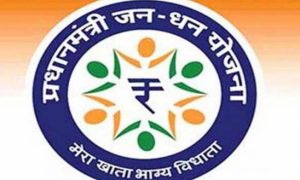New Delhi: In a landmark decision, the Supreme Court decided to allow the use of private licences for “light motor vehicles” to be used to drive taxis and light commercial vehicles without endorsement in 2017. A three-judge bench of the Supreme Court of India widened the ambit of use of a ‘personal driving license’ by interpreting the term “light motor vehicle” under the Motor Vehicles Act 1988 to include all vehicles under 7.5 tons. To give effect to the Supreme Court’s diktat, the Ministry of Transport issued directives to allow individuals licensed to drive a light motor vehicle to be exempted from having their licenses separately endorsed for driving a commercial transport vehicle.
The liberalisation of the licensing process pursuant to the Supreme Court’s decision brought several benefits, ranging from eliminating long waiting periods for the endorsement to enabling license-holders to operate commercial vehicles. Besides eliminating this licensing bottleneck, the Supreme Court’s judgment enhanced employability, and virtually overnight, created a ready workforce of drivers for the driver-aggregator ecosystem.
Read More: Federal Bank Extends UPI For NRIs; Here’s What Customers Need To Know
Now, a larger, Constitution Bench of the Supreme Court has been approached by insurance companies, to set aside this judgment. These companies argue that the liberalisation of licensing has diluted driver competence checks. In the Indian context, with the licensing authorities being overburdened, reposing faith in a licensing regime to test driver skills would appear to be a farcical nod to the erstwhile License Raj. On one hand, is an argument ostensibly hinged on public safety, predicated on the theoretical benefits of rigorous licensing. On the other is the risk of an artificial ‘licensing imposed’ shortage of gig-economy drivers that would be caused by a reversion to the earlier licensing regime.
Imprudent to create artificial licensing barriers impacting the gig economy
For drivers desperately trying to find employment as operators of commercial vehicles, the endorsement process to convert a standard license to one that could be used to operate commercial vehicles, is just another licensing hurdle that creates an artificial barrier to earning their livelihood. This has fostered a culture of speed money demands being par for the course when applying for a driving license, that is fed into the system via brokers and agents to expedite licensing and evade driving tests. The graveness of this decision is underscored by the petition filed by a trade union representing 2250 drivers in Tamil Nadu, the Urimai Kural Driver Trade Union, arguing that any decision that asks the drivers to apply for and get a commercial endorsement from the regional transport offices would “render such drivers unworkable and inoperative.”
Read More: Weather update: IMD predicts heavy rains for many states till October 15; check latest forecast
The criticism that has been levelled against this move to unify the licensing regime for vehicles up to 7.5 tons runs counter to the realities of licensing and enforcement in India. If safety were indeed the concern, then issuing meaningful safety standards for commercial drivers, mandatory online testing and refresher courses could very well be embedded in the current licensing regime. Insurance companies have, after the 2017 judgment been unable to reject claims based on the inadequacy of the commercial endorsement on the license of the driver, which may have driven up the exposure to claims that insurance companies would be compelled to underwrite without any technical grounds for rejection. Embedding safety standards in licence conditions would hopefully provide comfort to insurance companies who fear higher claim settlements on standard premia, as also to regulators and the users of these transport vehicles. A reversion to the split licensing regime, other than to aid insurers to find additional, technical grounds to reject claims does not hold any water. Given the magnitude of the adverse impact, the balance of convenience does not lie in favour of revert to a dual licensing regime. The ostensible reasons for revisiting this forward-looking judgment, would accordingly need to be scrutinized through a sceptics’ lens.
Read More: Ayushman Bharat’s Scan and Share Service Surpasses One Crore OPD Registrations
Serious livelihood concerns of gig workers
The Supreme Court’s order in 2017 paved the way for multiplying livelihood opportunities for drivers offered employment in the gig economy. A reversal of this unification of licensing across light motor vehicles would cripple opportunities for gig-economy drivers by reducing the pool of eligible drivers. With industry estimates projecting up to 60% of drivers engaged with cab aggregators potentially being impacted, urban mobility, which is dependent on cab aggregators in several cities, is also likely to be impacted. Any decision to revert to the commercial licensing regime would likely reduce the number of drivers across fleet operators, cab aggregators, and last mile delivery companies, causing a ripple impact that cannot be minimized or brushed away.
A Niti Ayog report titled ‘India’s Booming Gig and Platform Economy’, points to the scale and macro-economic impact of the gig-economy drivers in the economy. There are ~3.30 million platform workers in the digitalised passenger mobility and hyperlocal delivery services segment plying taxi-cabs, auto-rickshaws, and two-wheelers for delivery or taxi services, with more potential to grow in the years to come. This is over twice the ~1.25 million employees engaged by the Indian Railways, India’s largest and the world’s eighth-largest employer.
Insurance companies believe the current licensing regime is bizarre as anybody with a LMV licence today can drive let’s say a truck under 7.5 tonnes without any additional training or need for endorsement and that is in their view dangerous and should therefore reflect a greater risk premium. The reality is that premia figures vary with every vehicle and depend on factors such as the driving record, the usage of the vehicle, state of road infrastructure, degree of adherence to traffic laws etc. This is why even within the actuarial community, opinion is divided on the efficacy of the argument in favour of a split regime. In the absence of empirical evidence, it may not be prudent to tinker with the current ‘unified licensing’ regime to the detriment of millions of workers in the unorganized sector.





































